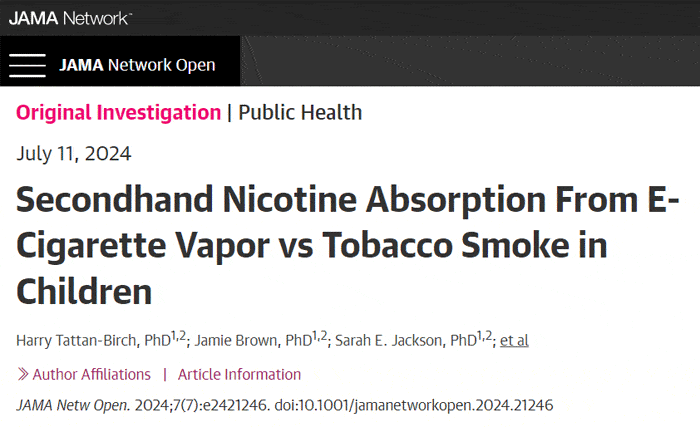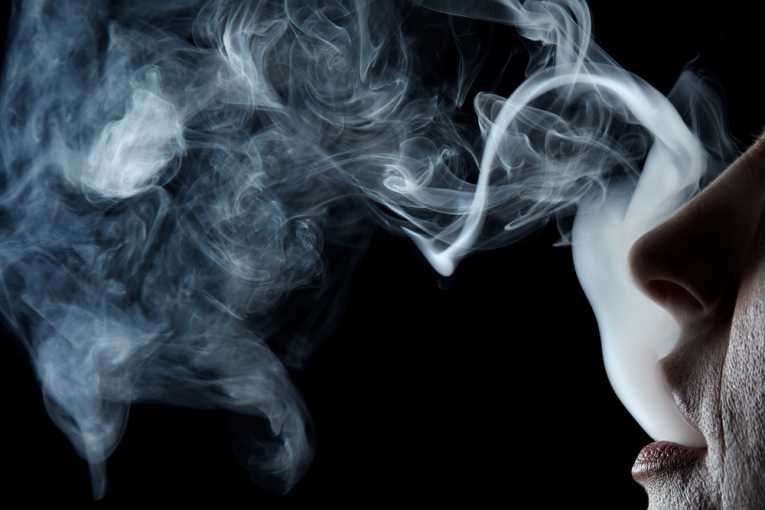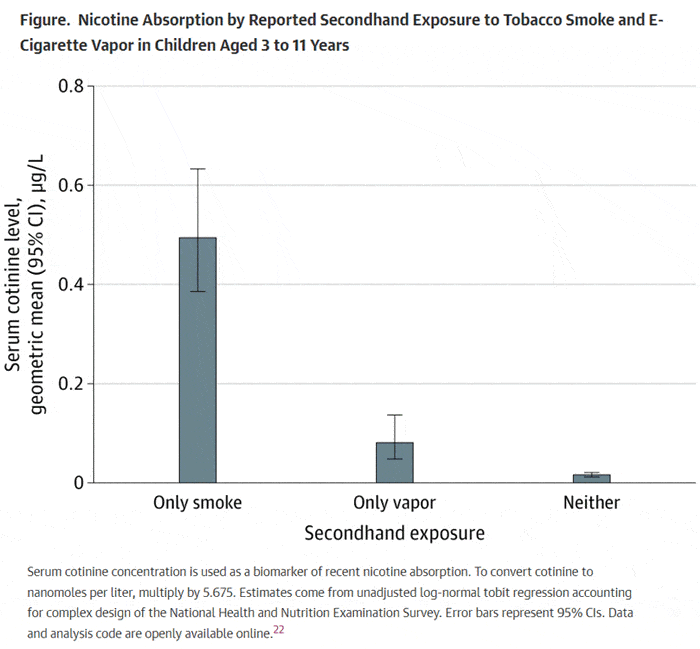A new study has been published examining the secondhand absorption of nicotine from tobacco smoke versus e-cigarettes / vapes.

It is an often cited myth that secondhand inhalation of e-cigarette vapour is dangerous so it is great to see a study focusing on this.
You can read the full study here or I will summarise the main points below.
Secondhand Nicotine Absorption From E-Cigarette Vapour vs Tobacco Smoke In Children
Method
The aim of the study was to determine how much nicotine was absorbed by children when they were around smokers or vapers.
1777 children aged 3 to 11 participated from the US.
The data used was from the US Continuous Nation Health and Nutrition Examination Study (NHANES) which is a repeat survey. Participants are interviewed in their homes and several days later visit mobile test centres to provide biological specimens.
The final analysis was conducted on January 8th 2024.
Biological samples provided the levels of Serum Continine which displayed the amount of nicotine absorbed by the children participating.
 Results
Results
Nicotine absorption (serum continine level) was highest among children who were only exposed to secondhand tobacco smoke at an average of 0.494 microgram/L.
Those exposed to only secondhand e-cigarette vapour had absorption rates at an average of 0.081 microgram/L.
The participants who were not exposed to either had average rates of 0.016 microgram/L.
Therefore those who were exposed to only e-cigarette vapour had a 83.6% reduction in continine / nicotine absorption compared to those exposed to tobacco smoke.
Conclusion
I quote from the original study…
“In summary, we found that nicotine absorption is much lower in children who are exposed to secondhand e-cigarette vapor vs secondhand tobacco smoke, but still approximately 5 times higher than in those exposed to neither. This suggests that switching from smoking to vaping indoors may substantially reduce but not eliminate children’s secondhand exposure to nicotine and other noxious substances.”
🚨Our new study just out🚨
Children exposed to vaping indoors absorb 84% less nicotine than those who are exposed to indoor smoking, but more than children exposed to neither.https://t.co/j9YMUEm577@LionShahab @jamiebrown10 @DrSarahEJackson @UCL_BSH @UCL_IEHC @UCL_TARG
— Harry Tattan-Birch, PhD (@TattanBirch) July 11, 2024
Study shows second-hand vaping exposure very low compared to second-hand smoking https://t.co/DF2DrWrNCb
— NCSCT (@NCSCT) July 11, 2024
New research finds “children absorb much more #nicotine from second-hand smoke than from second-hand vapor; switching from #smoking to #vaping indoors may substantially reduce children’s second-hand exposure to nicotine & other noxious substances”.
Paper: https://t.co/tiyewrZNAi https://t.co/FUOQgUnfTX
— The Global State of Tobacco Harm Reduction (@GlobalStateTHR) July 12, 2024
Second-hand vaping is not the same as second-hand smoking.
New paper led by @TattanBirch indicates second-hand vapour exposes people to vastly lower levels of nicotine than second-hand smoke.
Exposure to more harmful substances is likely to be lower still. https://t.co/HMgKQmNbz6 pic.twitter.com/EwY3LjNshX
— Sarah Jackson (@DrSarahEJackson) July 11, 2024
 Results
Results





